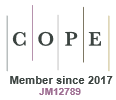Just Accepted
This article has been peer reviewed and accepted for publication. It is in production and has not been edited, so may differ from the final published form.
The reliability of latex weak-links on radio collars used to track eastern grey kangaroos (Macropus giganteus).
Abstract
Telemetry neck collars are commonly used to collect spatial data on free ranging animals. Two major challenges in application are entanglement prevention and retrieval of the collars post study. Weak links made of a degradable material are a solution to these challenges but can perform inconsistently in different environments due to the influence of animal behaviours and weathering factors such as heat and humidity on function. A study of disease in Victoria, Australia provided an opportunity to deploy 35 radio collars fitted with a latex weak link on eastern grey kangaroos (Macropus giganteus) between May to July of 2022. At the conclusion of the study, 20 collars were manually removed from euthanised animals, and 15 detached in the field, all of which broke at the weak link. Among the 15 detached collars, 10 dropped from live animals due to degradation between 106 to 208 days (x̄ = 147 days) after deployment, four were found detached near a deceased animal and one dropped immediately after attachment. The performance of the device in this study demonstrates the utility of weak links as a cheap and simple remote detachment tool to prevent entanglement and achieve remoted detachment of neck collars during tracking studies.
ZO24018 Accepted 28 January 2025
© CSIRO 2025



